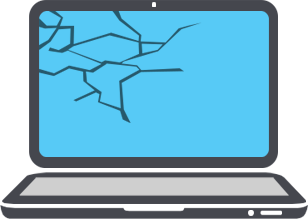D-11 Internet: What’s The Issue?

November 6, 2018
As you may have noticed, the current state of our school-wide internet use has been poor at best. Despite the primal need to keysmash, there’s not a lot that students- or teachers- can do. Wondering why there’s a major problem? Here’s some answers!
Mr. Cox, the “Cybrarian” of Coronado, sheds some much needed light on the subject. “The servers downtown are really, really old, and they break down, is what it comes down to. So when we push the new fiber optics through it, one piece breaks, causing another piece to break, and then everything just falls off the planet. So, we lose our network drives, we lose our student and teacher drives. So, it’s just that we’re dealing with really old technology, largest part of the problem is that this technology can’t keep up. That’s a lot of what’s happening right now. As we put in new technology, sometimes the new stuff that’s trying to deal with our antiquated stuff, they simply don’t mesh.”
The simple answer to this long-lasting problem, sadly, is just patience. There’s not many things that a student, teacher, or librarian can do. There are other ways to deal with this problem, however.
“Teachers always need to have a backup plan, especially when they’re planning on using primarily tech for the day. That’s teaching 101, there. You’ve got to have a plan for when the technology doesn’t work. It could be a million reasons why it’s not working that day! Teaching still has to happen, you know? You can’t just have the day off because your tech didn’t work. Nobody wants to hear it, but, there’s no guarantee that your network’s going to work that day. There just isn’t. If you’ve been around long enough, it’s going to go down, it’s just a matter of when.”
“There’s not a lot that students can do right now to mess around with it, it’s an infrastructure thing. You’ll recognize that your network’s very blocked. So you can’t go to a lot of places. For one, it’s to make sure to you don’t go to places that’ll rot your brain. More importantly, your personal emails are what we block because that’s where we get a lot of those viruses.”
According to Mr. Cox, the largest way that these viruses are spread is through the media students share with each other.
“When you send fun stuff back and forth between you and your friends, and then somehow a virus gets attached to a meme or something else, and you click on it, and then that virus spreads. Hopefully, we’ve blocked most sites that we know are fishing sites that we know would put a virus into our system.”
The effect viruses take on the district’s internet system takes a greater toll than we think. Viruses have begun to spread quicker and quicker, and the district sadly can’t keep their technology up and running properly long enough to put up a decent fight.
“It’s a pretty scary thing when a virus gets into our network, because it can start replicating across the network and we could lose the entire system to a singular virus. So, we kind of have to protect from those kinds of things. Part of not using some public sites and personal emails is to avoid the chances of getting a virus.”
Despite the constant ups and downs of the state of the district’s internet, we have continually made do with what we had in the moment, even if we had a little panic along the way. The best way to deal with these issues is to have another plan at the ready, and to simply be patient with what little tech we have.
“In short, have a backup plan and try to be patient. We are making some progress with getting newer technology for our wifi into the buildings, and that’s going to help with student devices and hooking things up and things like that. Currently, when you’re on personal devices, if you switch from one node to the next node, you drop. Then, you have to log in again, which is painful at best.”
Mr. Cox has been working with the district to get improved internet services.
“Supposedly, over spring break we are being slated to get new nodes in the buildings. That’ll double the amount of access points that we have now. I’m hopeful that when that stabilizes, we’ll let student’s personal devices roam. Then they’ll all be able to stay logged in all day, and you have a constant resource with you. Once you get to school, you log in and that’s it! At that point, the only time you’d get kicked off is when there’s not any capacity.”
These new nodes would not only help students with having new resources, it would help kids who have trouble with technology be able to keep up in their studies.
“I’ve had a couple kids who really, really need this to happen. There’s kids with dyslexia here, and it’s tough to keep logging into the network. It’s difficult. But, we were able to help him connect to data, but there’s still room for improvement everywhere.”
District 11 may be behind when it comes to collecting and maintaining technology and networks, but they are making great strides toward changing the major issues before the school year’s end! Though there are still major problems that don’t seem to have an end in the near future, we are still very hopeful that out connection lasts for as long as it can.
When you have an issue, contact Coronado’s library, and get our tech-savvy Cybrarian’s support!

